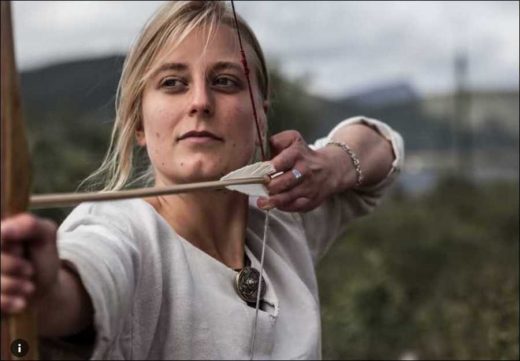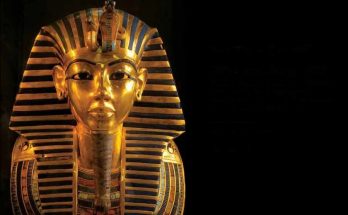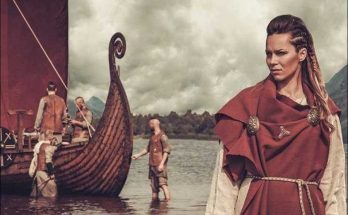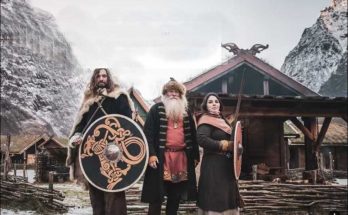Elite, Settler and Warrior Women in the Viking Age. If some women were indeed involved in trade, they probably belonged to the upper echelon of society or at least had good opportunities and status. The wealthy and powerful of the Viking Age – a group that was clearly not exclusively male – have managed to reach the modern world in a variety of ways: for example, the large rune stones erected throughout Scandinavia, or from simply ‘rich’ to ‘so extravagant as to leave no room for questioning the importance of the person buried’. with extending tombs.
Runic stones, which were covered with runic writing and decorations and were generally erected in memory of the dead, were generally made by wealthy families and their lives were told. In addition to the importance of women in these families, some stones were planted by women themselves. According to Judith Jesch, from this situation we can get the impression that “very few women have a high social rank.” The runestones also show how important a woman’s inheritance was in facilitating the transfer of wealth between families. Luxuriously furnished women’s graves (even ship graves) found in rural areas also indicate that women could reach a high social rank in these regions.
More than forty graves have been found in and around Scandinavia, supporting the idea of a “female wizard” derived from Viking texts and legends. Seiðr, generally associated with women in sources, is a type of shamanistic magic. Female sorcerers are called vǫlva (singular: vǫlur); vǫlva are powerful wizards who have the power to see the future and carry staffs.
Staff-like objects with symbolic meanings have also been found in graves from the Viking Age. Although these graves were generally rich in clothing and grave goods, they also contained items such as talismans, amulets, exotic jewellery, face piercings and toe rings. Some graves even contained psychoactive substances such as cannabis and henbane. The place of these women in society remains a mystery.
We also have some information about the graves of noble women. Discussing the remains of two women found in the luxuriously furnished burial chamber on the ship Oseber, Judith Jesch says that noble tombs such as the Oseberg can only be compared with the monuments of people of immense status, wealth and power. “Although they have many things in common with other Viking Age graves, these graves are truly in a class apart from the rest.” We still don’t know if these women were a queen and her servant or something else, but one of them is certain to have been of high status.
Another wealthy woman was Aud the Deep-Minded, who lived in the late 9th century. Aud, who is said to be the daughter of a Norwegian chieftain living in the Hebrides and married to a Viking living in Dublin, takes control of the family fortune after the death of her husband and son and goes to Orkney and the Faroe Islands with her grandchildren, eventually settling in Iceland. Aud, who distributed land to those who accompanied him in Iceland, became a Christian and was counted as one of the four most important settlers of Iceland.
Last among the elite were the Viking Age queens. Some of the queens reigned in a small area, while others had very large circles. Of course, Viking Age women may have come to certain places through their husbands or sons, and the more important they were, the more opportunities the women with them had.
Settler Women
Following Viking raids across northern Europe and beyond, Viking lands expanded into Russia and Greenland, and even as far as Newfoundland in North America. It is obvious that a proper settlement would be difficult without women, and Viking graves in these regions confirm the existence of women.
Although Anglo Saxon and Frankish sources from the late 9th century indicate that Viking troops traveled with their children and wives, and there is evidence of textile production at campsites such as Torksey, it is difficult to imagine or find evidence that women played an active role in the Vikings’ first raids and expeditions. Of course, these families or campers did not necessarily have to be Scandinavian women: Viking armies attacked both Continental Europe and the British Isles and probably took some of their women with them. It’s unclear how common this scenario is.
On the other hand, the period becomes a little clearer with the first proper settlement movements: Immigrant Scandinavian families gradually settled in the British Isles in the 9th and 10th centuries, in Iceland in the late 9th century, and later in Greenland. Iceland and Greenland consisted entirely of Scandinavians, while the British Isles and Russia had a mixed population with those already living there. For example, a pair of bronze brooches and a Celtic pin were recovered from the grave of a so-called Westness woman in Orkney, dating back to the 9th or 10th century. Approximately 30 Christian runic monuments with Scandinavian style decorations were found in the grave of a Scandinavian woman on the Isle of Man, and these monuments contain both Norse and Celtic names.
Warrior Women
Famous 13th-century Icelandic legends of the early Viking Age give a new possibility to the role of women in society: in these legends, women appear as powerful people who do not hesitate to take action, seek revenge, oppose their husbands and even take part in fights. But these legends tell about a time long before the date they were written, under different conditions; Therefore, it may be an exaggeration to make such an opinion about the women of the period.
Still, the idea of a “strong Viking woman” created great excitement in society. For example, when Charlotte Hedenstierna-Jonson published her article “Female Viking warrior confirmed by genomics” in 2017, the excitement seemed to overtake caution. The article talked about a tomb called Bj 581, dating back to the 1800s, located in Birka, Sweden. Next to the skeleton in the grave were horses, various weapons and a stallion, indicating that he was a warrior. Test results showed that the bones belonged to a woman; Adding to this conclusion the game pieces found in the tomb, which the author associated with tactical and strategic thinking, the article referred to the woman as the “first confirmed high-level female Viking warrior.”
Critics noted that this inference was more of a guess than a fact. The skeleton did not have the wounds expected of a warrior and did not indicate heavy physical activities. In this case, we must not forget how difficult it is to relate grave goods to a person’s real life. Couldn’t the woman in question be buried with her warrior belongings for a symbolic reason?
Of course, the situation will change if other evidence about women emerges, but the archaeological and historical evidence we have is not enough to confirm that Birka women were active warriors. Here, as in other areas, the lives of Viking women were much more uncertain than those of men of the period.
Views: 451



